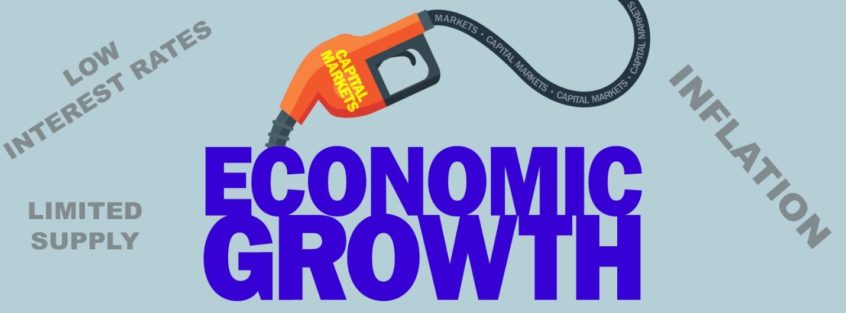Despite a hazy outlook on the future of the workplace, Industrial and Office Building sales volume and pricing are back to, and in some sectors, exceeding pre-pandemic levels. According to Costar, “Except for 20Q3, Albuquerque industrial investment activity has remained robust throughout the pandemic. Trailing 12- month investment volume totals $58.7 million, above the 10-year annual average of $40.7 million.” Office investors have also been active in Albuquerque. According to CoStar’s research. “More than 6% of inventory has traded annually in three of the past four years” with Investors primarily coming from within the state.
“Investment activity in the retail sector dropped off in the immediate aftermath of the pandemic, but sales picked up later in the year amounting to $56 million in traded assets in 2020, compared with $96 million that traded in 2019” according to Co-Star. Thru the 1st half of 2021, sales activity totals $30 million.
Fueling commercial real estate investment activity are fears of inflation, historically low interest rates and a shortage of supply. As the Federal Reserve continues to inject money into the economy, many investors believe that inflation is on the horizon. When inflation occurs, the value of the US dollar weakens; in turn, causing an increase in price of goods and services.
While inflation can hurt intangible investments and those subject to daily market fluctuations, it can actually strengthen commercial real estate investments. Unlike bonds and cash, which lose purchasing power when prices for goods and services are rising, commercial real estate is generally a fantastic hedge against inflation because it holds intrinsic value, is in limited supply and is a yielding asset. In the commercial real estate space, investors can mitigate risks and take advantage of inflationary protections in a few different ways:
- Increase in Labor and Material Costs Creates Barrier to Entry
With costs of labor and materials on the rise, new projects become very expensive, which leads to a limited supply of buildings at a relatively lower cost basis (compared to expected costs for new building development). In the short run, this causes a rise in both rental rates and property value. - Lease Structure Protects Property Owners
Most commercial real estate leases are structured that either the Tenant is responsible for all the operating expenses or there is a base amount the Landlord pays, and the Tenant is responsible for all increases above the base. These lease structures help protect property owners from the increase in expenses due to inflation. - Property Value Increases with Ability to Adjust Rent Prices.
Inflation will typically have an upward pressure on rents. More rent means more income. More income means higher sale value. - Locking in Historically Low Interest Rates
With interest rates at historic lows, borrowers can lock in long-term debt at low interest fixed rates. Combining increasing cash flows with low cost of capital effectively enhances your return and the equity in the property increases.
Commercial real estate is a good hedge against inflation. As the market leader in commercial real estate investment sales, at Real Estate Advisors we welcome the opportunity to discuss with you any of your commercial real estate needs. Your success is our focus.

